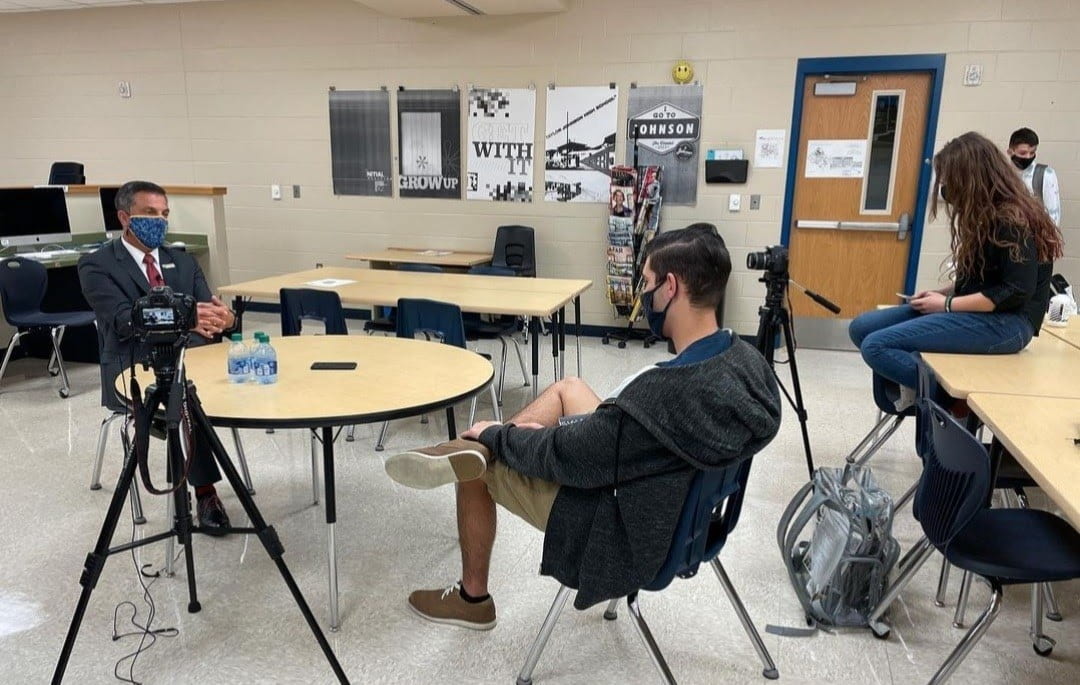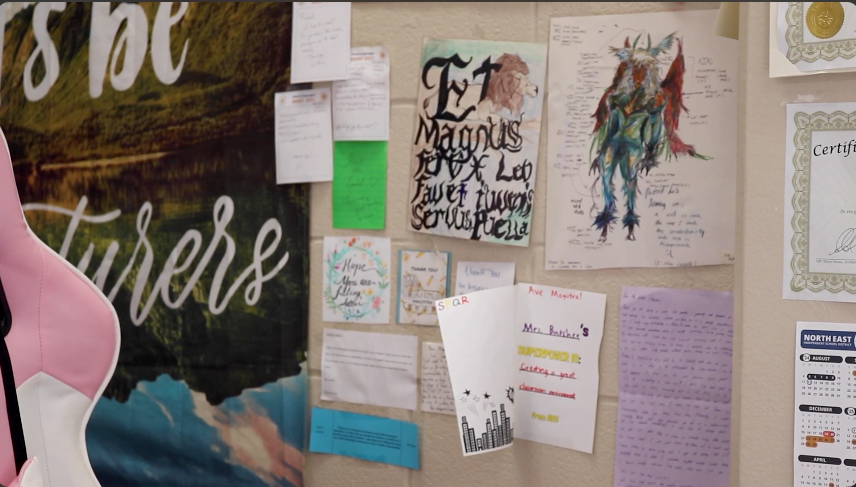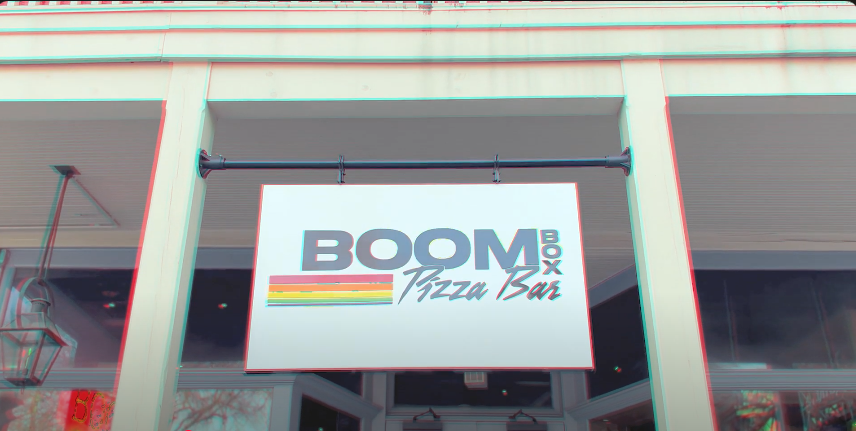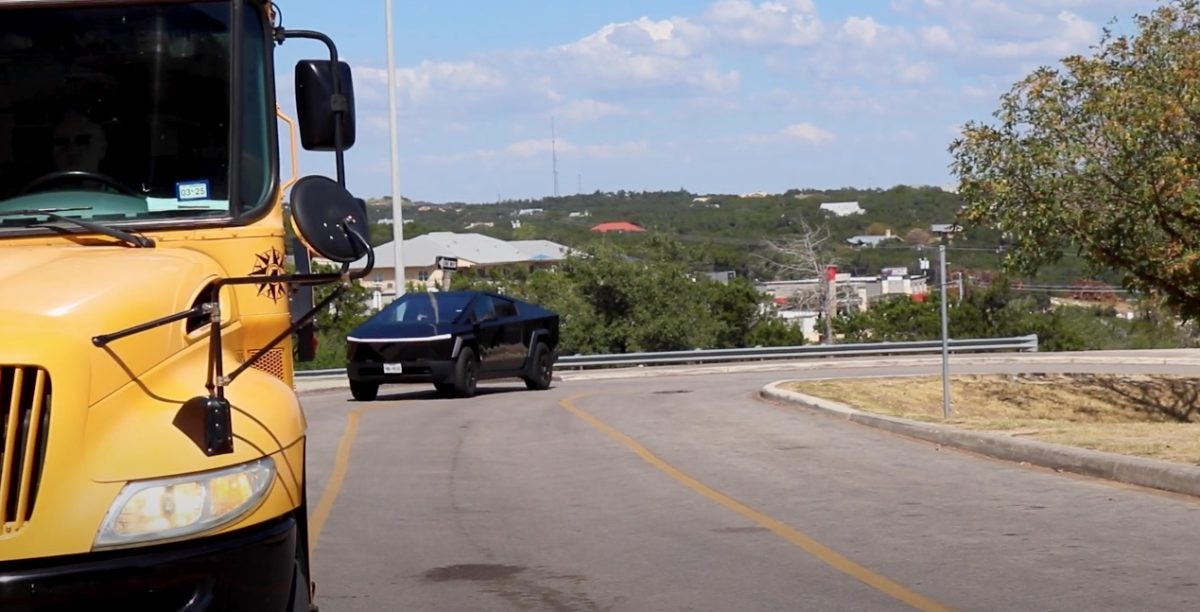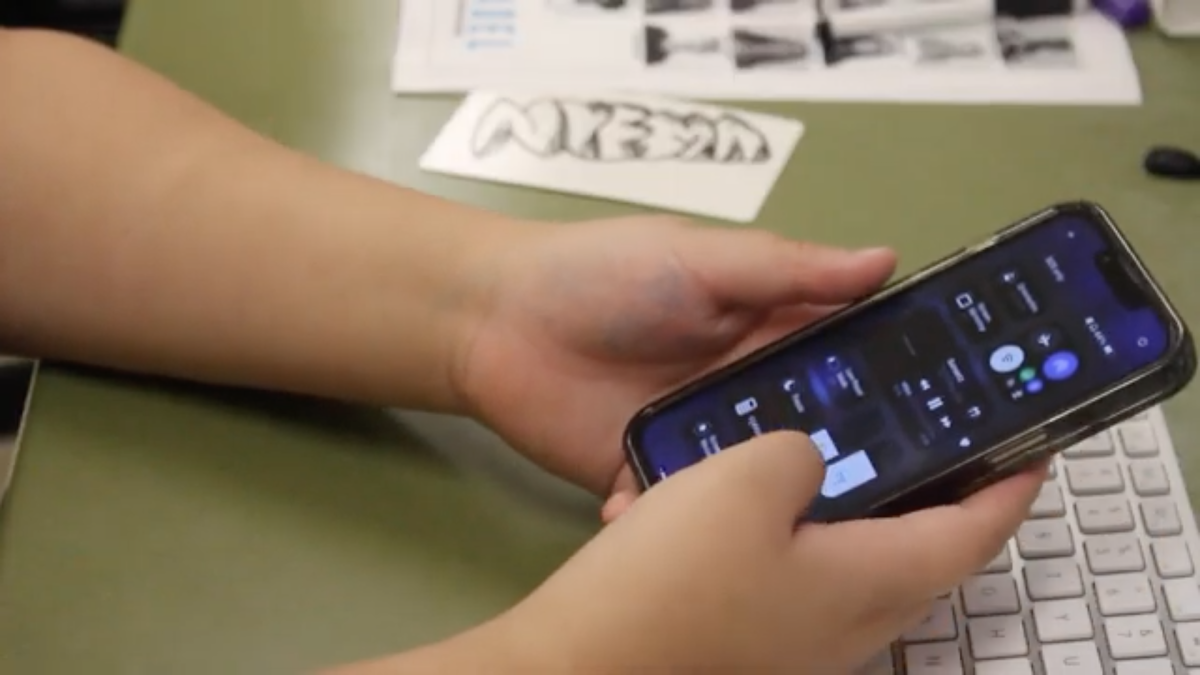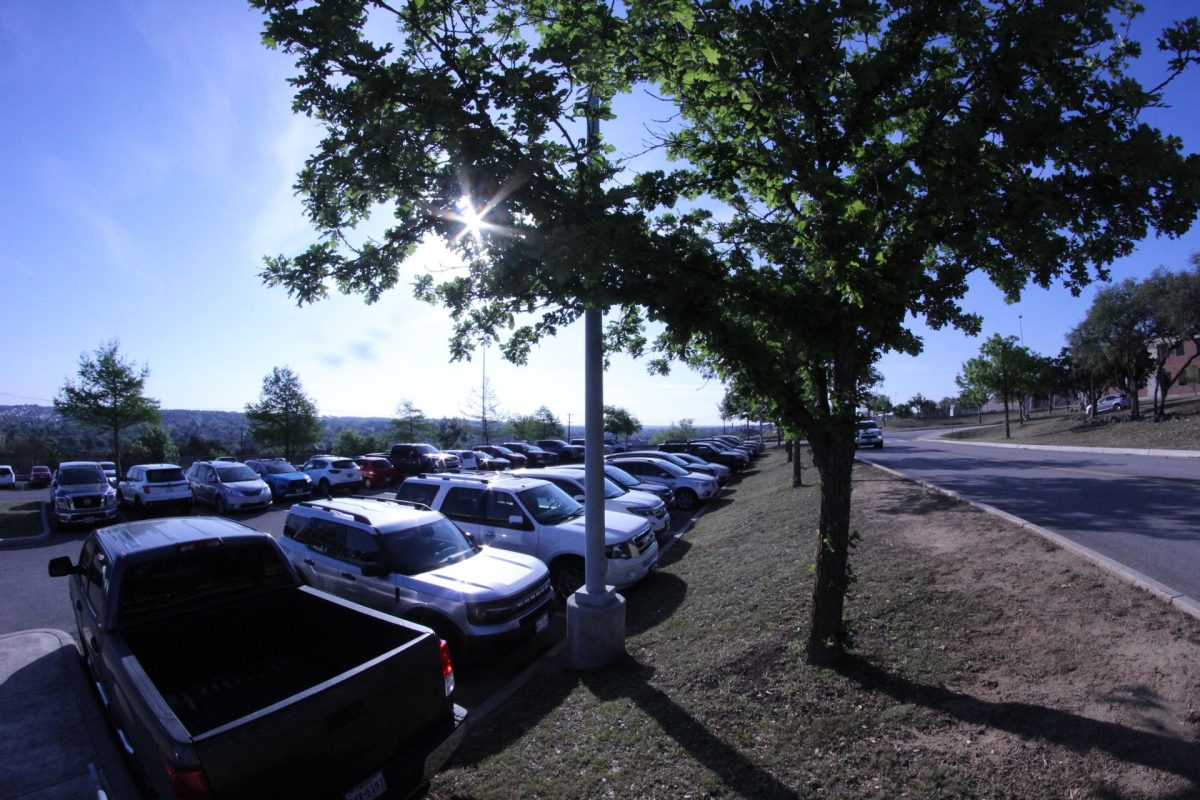by Joseph Sweeney | editor-in-chief
After a year like no other, with many changes possible in the future, Superintendent Sean Maika visited campus to reflect on the district’s response to the COVID-19 pandemic.
“In August, when my staff and I brought the board of trustees our phase-in plan, I said at that moment: ‘opening schools will be easy, keeping them open will be our challenge,’ Maika said. “What we saw around the state and across the country where school districts have to close, schools had to close, and we never did either. Now did we get close to having to close a school? Absolutely, but not because of a spread of the virus but because of quarantines. I think our plan was extremely effective because what it set out to do was to never close a school and we never did.”
As of April, around 60% of students were learning in-person. Around 2,200 COVID-19 cases were detected across all NEISD campuses among the 36,000 in-person learners.
“We saw very early on that schools are not spreaders, because what I was doing was pulling our in-person learners and then comparing it to the number of confirmed cases, and I saw very quickly: the number back in-person had nothing to do with the number of cases that were reported in-person. In fact, for the longest time, the high school with the least number of students back in-person had the highest number of COVID cases,” Maika said. “What we discovered very early on, was that schools were very structured and we’ve always had these rules and students have done a great job at following them. What caused so much fear and anxiety was the unknown.”
Though a number of cases were detected on-campuses, there have seldom been community spreads of COVID-19 during in-person learning activities.
“On-campus does not mean it happened on-campus,” Maika said. “These are cases that were found on-campus, cause here’s what we discovered: people would send their kids to school thinking they were just allergies. And then we would find out, no, those are symptoms of COVID, you need to get them tested, and then they would test positive for COVID. So it’s not like they got it at the school, we just found it at the school. When students left and went home, I had reports of huge slumber parties, and then we would see a huge spike in cases. It was really, and what we saw very early on, and what we continued to see is that it’s not so much what they’re doing at the school, it’s what they’re doing outside the school.”
While case numbers continue to drop in the San Antonio area, it is still likely that virtual learning will be funded next year, though what it may look like remains to be seen.
“There are three vehicles for it to happen: the senate has a bill to continue it, the house has a bill, and Commissioner Morath has executive powers for it to continue,” Maika said. “The question becomes: will it be funded whole day ADA [average daily attendance], or will it be funded half day ADA? Cause right now, as the current law says, its half day funding. Before this, there was the Texas Virtual Network; there were some schools around the state that were virtual schools even before the pandemic, and they were funded at half-day ADA. This emergency order that we’re under is still funding us the full day ADA. But the question becomes, as we move forward outside of this pandemic, because vaccinations are ramping up, what does it look like and how does it get funded moving forward?”
Current legislation regarding virtual learning in Texas also requires that funding for an individual student be revoked if said student fails the academic school year, though this rule could be overturned by executive powers.
“There are strong opinions on both sides of that,” Maika said. “Because if you’re failing three classes, and we just continue allowing you to fail, is the system working for you? So at what point can we step in and say ‘we can’t let you fail and be off track for graduation,’ we gotta get you to complete your coursework on time and on schedule. Again, as we learn more about the vaccine moving forward it will be interesting to see how parents respond if there is no vaccination for kids, or they don’t feel like they want to give it to their child, and what that’s going to look like. There’s just so many unknowns right now moving in. I just know virtual is going to look different than what it is right now, because I do not see having your teacher teach kids in-person and virtually at the same time. That’s burning them out. That’s too much.”
If virtual learning were to be funded for the 2021-2022 school year, the district has discussed implementing virtual academies, where students will be enrolled in a separate virtual elementary, middle or high school, and remain virtual all year.
“I think you’re going to see a lot of people do a lot of different things,” Maika said. “I’ve not looked at all the problems; I’ve looked at opportunities: let’s take Latin. Latin isn’t a popular class at some of our high schools, but there are still some students who want it. So when you have a teacher, and this teacher may only have one class a day of latin, so what principals do is they fill their schedule with a lot of other things. But what we could do is take that teacher and say ‘you know what? We still want to offer all seven languages, but we don’t continue having a teacher only teach one class. So hey, why don’t we virtually connect this teacher to other high schools, fill their course work with Latin, and build in a system.’ That’s the stuff we’ve seen can happen.”
Regardless, the plan of action for all Texas public schools depends on the state’s response to the state of education and the pandemic.
“See, my daughter is in dance, so pre-COVID, they would go to UDA [the Universal Dance Association] in Florida, and they’d miss 3-4 days of school,” Maika said. “So what the teachers had to do is go around, get all the stuff together, and my child would go and come back and would have to try to catch up with the 3-4 days of work. Well what if now at UDA she could say ‘you know what? I’m going to virtually connect with my teacher, and I’m going to listen to the instruction, and I’ll never miss a day.’ Those are the possibilities that I think this presents to us. It’s just, as a system, what is it going to do? Is the system going to allow it to happen like that? And again, we could say we want it, but TEA could say ‘we are not going to allow it, we are not going to fund it,’ or ‘we are not going to allow you to do those things.’ There’s a lot of rules and things that got to be worked out.”
The district still feels that students should return to in-person learning for the sake of their education. Students and parents are also urged to understand that, although remote learning may be funded next year, the TEA does not mandate that public schools offer it.
“For a select few kids it is working,” Maika said. “For the vast majority of students, virtual learning doesn’t work well. Because what I hear, even from our student voice, is ‘it’s so hard for me to sit in my bedroom, or be at home, and be in school, because it’s a physical space where I am distracted by all these other things in my room.’ When you’re at school, you don’t have those distractions.”
While the district prepares to move us into a more normal school year, the financial effects of the pandemic on public schools are yet to be seen. A hold harmless agreement between the state and public schools has continued to offer funding in accordance with 2019 attendance, however, this may soon change.
“We lost about 3,400 more students [which] would be in our buildings this year,” Maika said. “What hold harmless did was it said ‘we’re going to still fund you for that 3,400 student loss. So, as a system, we didn’t lose a whole lot. But I don’t think you’ll have hold harmless next year. We’re gonna have less money. Big decisions have to be made. We’re already, because we’re projecting less enrolment next year, we’re having to reduce what we call FTE: those are teacher positions. We’re having to downsize in teachers. We’re having to downsize across the system everywhere. 87% of our district’s budget is in people. So when we have to make up millions of dollars in lost revenue, the only way to do it is in people.”
Many unknowns remain to be navigated as the district prepares for more students returning on-campus next school year.
“Look, the system of education will feel the effects of COVID, I truly believe, for 10-12 years,” Maiak said. Why do we have tutoring? Because students were falling behind. So we always, as a system, have kids that have been behind in something. Now what we’ll have, and what we believe we will have anyway, is that number will be a lot larger. Commissioner Morath has shared that when he looked at third grade students across the state on STAAR, what he found is that if a child that had failed third grade, the system in the state had a one third chance to get [them] approaching on the STAAR in the fourth grade. In fifth grade the percentage that would actually get to meet would be 4%. So we have to be real and say that the system is not great. And so if that’s our system the way that we had it, lets say, hypothetically, say 10% of our kids are failing, and we can only get a third of them caught up, a little over 3%, so 6% continued to not do well. Now what if that 10% is now 25%? Do you see how this is going to take time? Commissioner Morath thinks it’s going to be five years. I think he’s being optimistic. He cites a study out of Argentina, during a teacher strike, I believe it lasted 70 or 80 days, and it affected the GDP of that country for 12-13 years. So I think the ramifications of this are going to be far long-term.”The full interview with Maika can be viewed on www.myjagnews.com.


